#hummingbird hawk moth
Text
Hummingbird Hawk Moths: as a result of their hummingbird-like behavior and appearance, these moths are often mistaken for actual hummingbirds
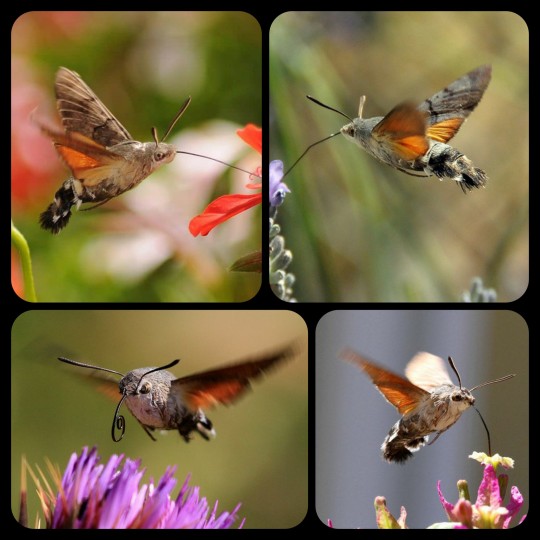
The Eurasian hummingbird hawk moth: Macroglossum stellatarum
Like an actual hummingbird, the hummingbird hawk moth uses a flight maneuver called "swing-hovering" (rapidly swinging from side-to-side while hovering in mid-air), has a wing-speed of up to 85 beats-per-second, produces a humming noise when flying, and feeds on the nectar from flowers; the hairs on its body even resemble the tail-feathers and wings of a hummingbird.
These moths are also able to maintain a stable position in mid-air by relying on the same flight patterns that are found among hummingbirds -- the moth rapidly rotates its wings in a "figure-8" motion, generating lift on both the forward and backward strokes, which effectively allows the moth to hover in place. The flight maneuvers (and other adaptations) of the Eurasian hummingbird hawk moth are so similar to the characteristic traits found in hummingbirds that this little moth is often mistaken for a real hummingbird, despite the fact that it is found exclusively in habitats that do not contain any wild/native hummingbirds. Though this species can be found in various ecosystems throughout the British Isles, mainland Europe, Central Eurasia, and even some parts of North Africa, there are no actual hummingbirds in any of these regions, as wild hummingbirds are found only in the Americas.
These moths (M. stellatarum) have a wing-speed of up to 85 beats-per-second. For comparison, the amethyst woodstar hummingbird, which is one of the smallest and fastest hummingbirds in the world, has a similar wing-speed of up to 80 beats-per-second.

While most other moths are nocturnal, the hummingbird hawk moth is active only during the day. It uses a specialized proboscis to feed on the nectar from various flowers, including honeysuckle, jasmine, tulip, red valerian, lilac, and phlox. This species also differs from other moths due to its lack of auditory organs, meaning that it has no sense of hearing. Among most moths, auditory organs have evolved as a defense mechanism to detect the ultra-sonic chirps that are emitted by predatory bats at night, but because the hummingbird hawk moth is only active during the day, when bats are largely inactive, that particular defense mechanism was not developed.
Experts generally believe that the similarities shared by hummingbirds and hummingbird hawk moths actually arose through convergent evolution; this means that the hummingbirds and the moths both experienced a similar set of needs, pressures, and circumstances within their respective environments, and they simply developed similar adaptations in response to those circumstances. Their uncanny resemblance therefore does not qualify as a form of animal mimicry -- the moths may look and act a lot like hummingbirds, but the resemblance is viewed as a product of incidental factors, and it is unlikely that those similarities were developed for the purpose of providing camouflage.
This is not the only type of moth that is commonly referred to as a "hummingbird moth." The genus Macroglossum contains several moth species that have hummingbird-like characteristics, and the term "hummingbird moth" can be applied to many of them; there are also at least five "hummingbird moths" in the genus Hemaris, although they belong to a separate clade and their resemblance to hummingbirds is somewhat less convincing. They include H. thysbe (also known as the hummingbird clearwing moth), H. diffinis (the snowberry clearwing moth), H. thetis (the Rocky Mountain clearwing moth), H. aethra (the Diervilla clearwing moth), and H. gracilis (the slender clearwing moth), all of which are found in North America.

Moths of the genus Hemaris: these moths may sometimes be identified as "hummingbird moths;" the genus Hemaris also contains a variety of moths that are popularly referred to as "bee hawk moths" or "bee moths" because they bear a resemblance to bumble-bees.
The Eurasian hummingbird hawk moth is not closely related to any of the "hummingbird moths" from the genus Hemaris, however, as it belongs to a completely different genus and occupies a separate habitat on the other side of the Atlantic. Still, it's interesting to note the presence of similar hummingbird-like traits within these different genuses.
Sources & Addition Info:
PBS Nature: Featured Creature, the Hummingbird Hawk Moth
The Wildlife Trusts: Hummingbird Hawk Moth
Royal Society for the Protection of Birds: Article about Hummingbird Hawk Moths
Journal of Comparative Physiology: Fuelling on the Wing: the sensory ecology of hawk moth foraging
Country Life: The Confusingly Enormous Hummingbird Hawk Moth that Looks Set to Become a Regular Fixture in British Gardens
#moths#cute moth#tw bugs#hummingbird#hummingbird hawk moth#insect#entomology#evolution#science#nature#lepidoptera#biology#I spend way too much time reading about moths#but they are just wildly underrated
620 notes
·
View notes
Photo

Moth Girl
3K notes
·
View notes
Text
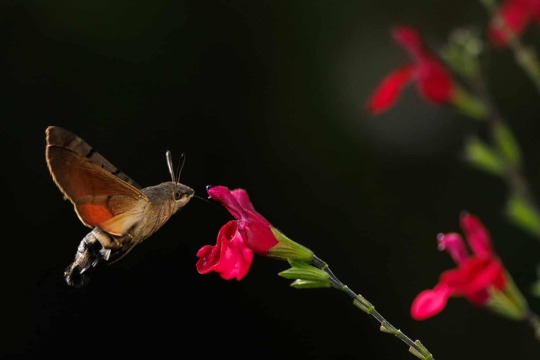
A hummingbird hawk moth feeds on salvia in a garden in London, UK. The moths are an increasingly regular migrant usually seen in July and August, though warming weather has meant a growing number are able to overwinter in the UK
Photograph: Dan Kitwood/Getty Images
#dan kitwood#photographer#getty images#hummingbird hawk moth#moth#insect#salvia#london#united kingdom#nature
25 notes
·
View notes
Text
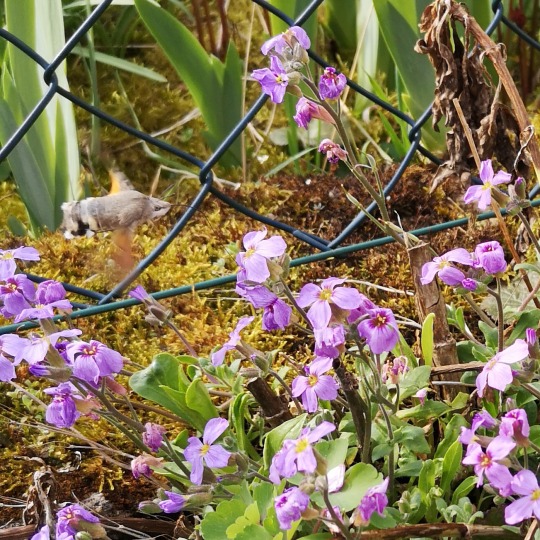
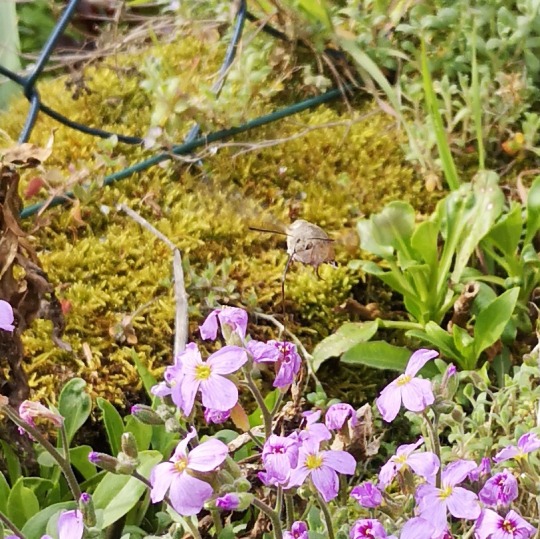

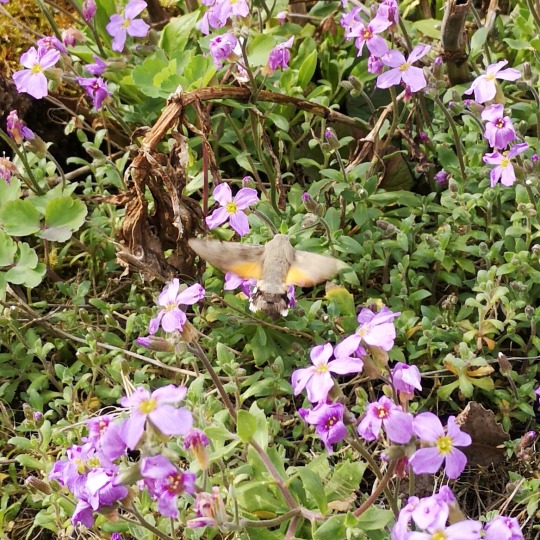

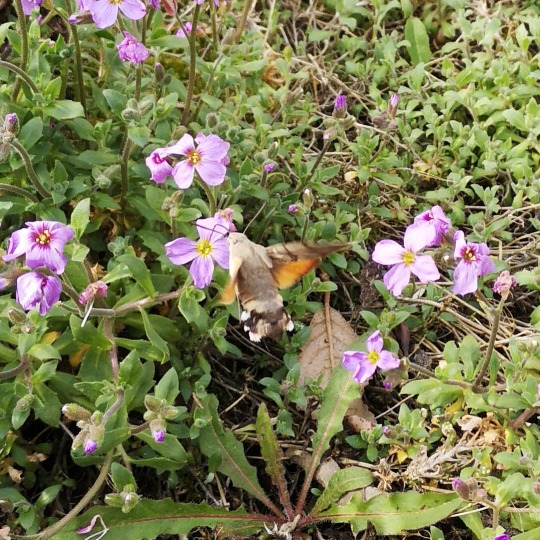
[ID: Six photos of a hummingbird hawk-moth, flying around small, purple flowers. End ID]
3 notes
·
View notes
Note
Ask inspired by your moth poem: do you have any favorite moths? I really like salt marsh moths and white-lined sphinx moths (and I really want to see a ceanothus silk moth some day.)
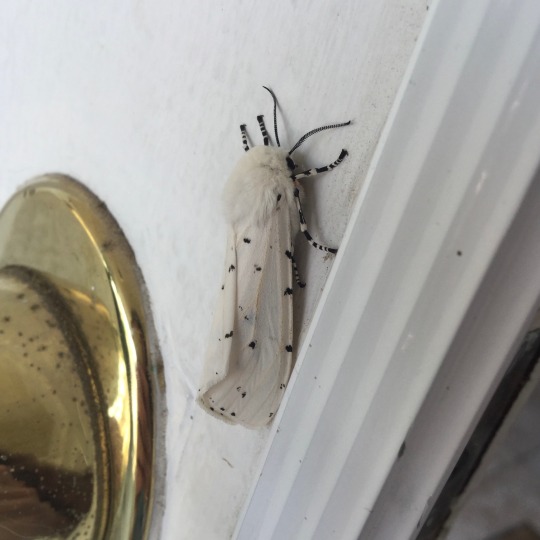
(salt marsh moth on my front door from a few years ago)
Such a handsome little fellow you’ve found :] - I adore moths, they’re such sweet creatures. When I lived upstate I would run into these clunky moths every spring, hummingbird hawk moths, that I fell in love with. They’re my favorite moths alongside the rosy maple moth.
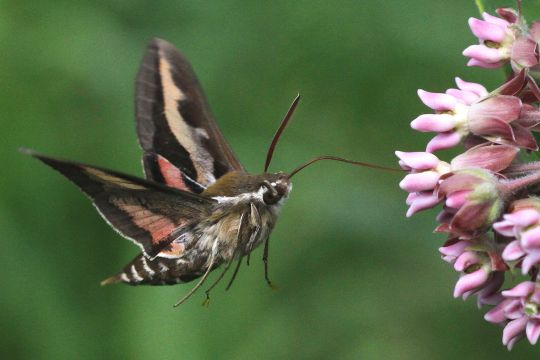

(These are hummingbird hawk moths. Images provided by Google.)
#i love moths#thank you for sharing Sofia 💕#salt marsh moth#hummingbird hawk moth#asked and answered#sofiaspeakman#I hope you’re able to see a ceanothus silk moth one day :]
8 notes
·
View notes
Text

PSA: Please, please, please
Do NOT buy or plant Mandevilla/Dipladenia plants in Europe
When Hummingbird hawk moths try to feed on the nectar they get their proboscis stuck and die a slow, horrible death. I've seen plants where every single flower had a moth dying in it. These should be illegal to sell
#moths#insects#hummingbird hawk moth#gardening#dipladenia#mandevilla#macroglossum stellatarum#psa#animal cruelty#non-native species
76 notes
·
View notes
Text
Hummingbird hawk-moth
#moth#hummingbird#hummingbird moth#nature#animals in the wild#birds#bird photography#moths#moth art#moth photography#hummingbird hawk moth
2 notes
·
View notes
Text

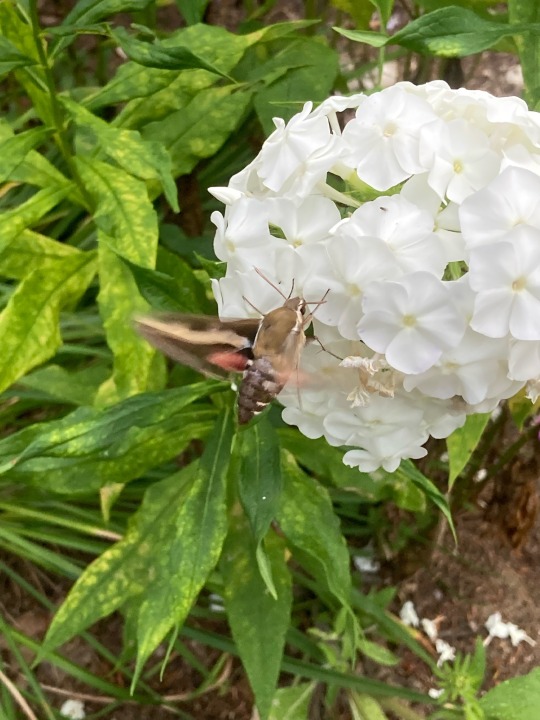

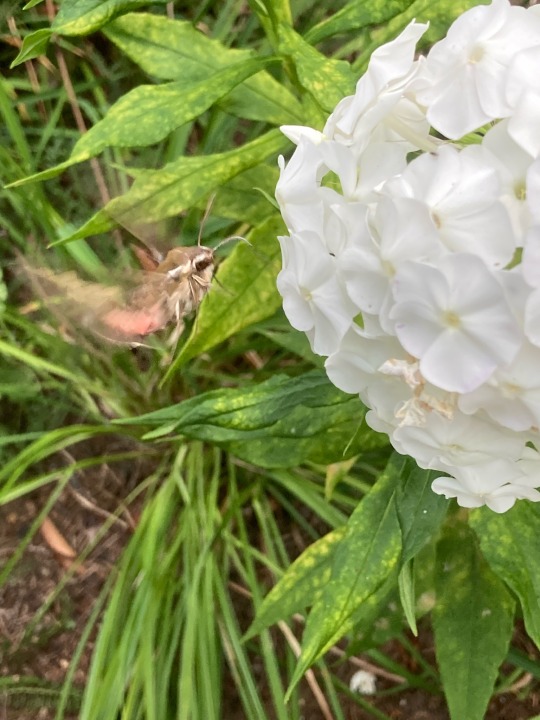
#photos#photography#bug#bugs#moth#moths#hummingbird moth#hummingbird hawk moth#white flowers#flowers#white#hydrangeas#hydrangea#white hydrangea#white hydrangeas#blur#blurry#motion blur
22 notes
·
View notes
Text

Spotted my first hummingbird hawk moth during garden class!
12 notes
·
View notes
Text
i love birds <3
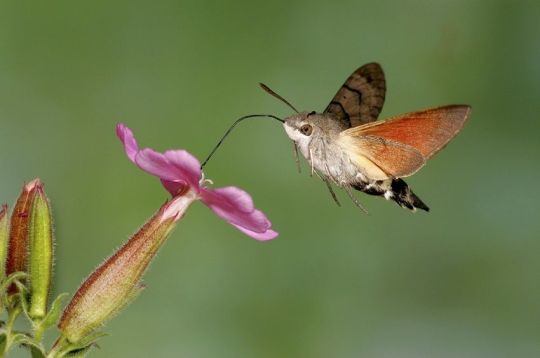
4 notes
·
View notes
Text
HAWK MOTH HAWK MOTH HAWK MOTH
1 note
·
View note
Photo

Hummingbird Hawk Moth
1 note
·
View note
Note
Whats your favorite bug with a proboscis? Theyre oddly charming :D
Probably hawk moths! They’re just so dang cute!
Here’s one I saw on Sedona last September:

#insects#entomology#bugs#insect#bug#nature#bugblr#Lepidoptera#moth#hawk moth#hummingbird moth#white lined Sphinx moth#hyles lineata#anon#ask#beau bug talks
27 notes
·
View notes
Text
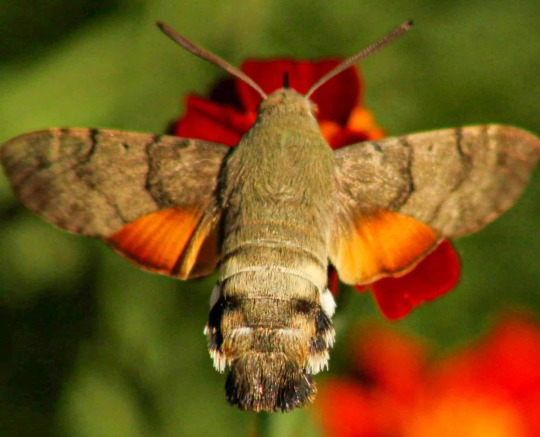
A hummingbird hawk-moth (Macroglossum stellatarum) in the Özalp district of Van, Turkey
Photograph: Anadolu Agency/Getty Images
#anadolu agency#photographer#getty images#hummingbird hawk-moth#moth#insect#macroglossum stellatarum#ozalp district#van#turkey#nature
42 notes
·
View notes
Text
was able to take wonderful pictures of a hummingbird hawk-moth today 😭
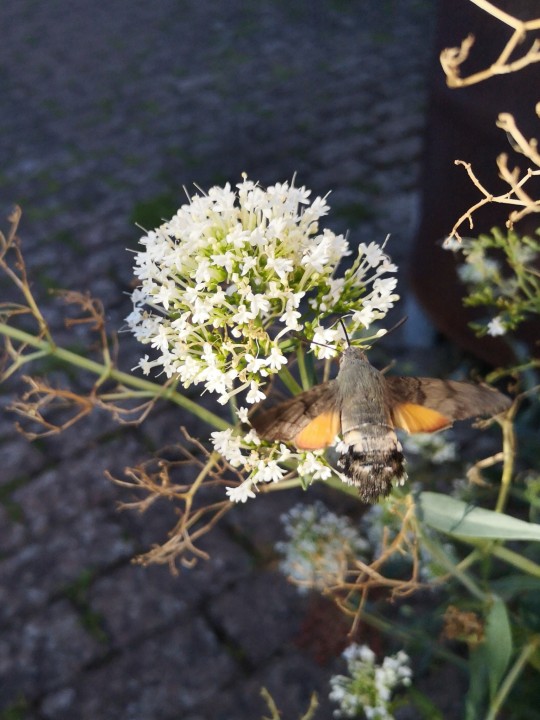



[ID: Four pictures of a hummingbird hawk-moth flying around & drinking out of a white flower. In the last three pictures its wings are blurry.]
#omggg I've never been able to get this close to one 😭#those fast beasts are always evading me :/#but this one was amazing 🎊🎉 10/10 would work with it again#it was a bit smaller than the ones I usually see? maybe it was still young and naive...#hummingbird hawk moth#bugs#hummingbird hawk-moth
14 notes
·
View notes
Text

Hummingbird hawkmoth! Gotta be one of the best insects of all time
108 notes
·
View notes